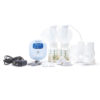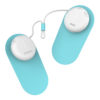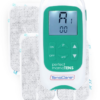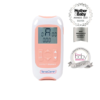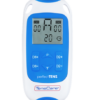Skin-to-Skin and What It Can Do for Breastfeeding (2023)


Skin-to-Skin & What It Can Do for Breastfeeding
Every birth is different. Often they are chaotic and overwhelming, sometimes they are simple surgeries, and for others, there are scary moments. However your baby comes into the world, the first thing they need is some skin-to-skin time.
The Public Health Agency of Canada has just released some tips for mothers to help them with breastfeeding. They point out that one of the most helpful things a mother can do for breastfeeding and more, is hold the baby skin-to-skin right after birth.
From the Beginning
Being skin-to-skin encourages breastfeeding because it wakes up your baby’s feeding reflexes and helps the mother’s body begin to make milk. A newborn is often awake and ready to feed in the first hour after birth. Studies have shown that skin-to-skin contact also calms the baby by reducing stress hormones which in turn decreases crying. Skin-to-skin time has also shown to reduce postpartum depression.
Beyond Breastfeeding
That’s not all it does. Being skin-to-skin with your baby right after birth helps regulate a newborn’s temperature, heart rate and breathing. It also brings changes to the baby’s natural gut bacteria which helps protect them from infection and illness. But not every birth can quickly allow for skin-to-skin with the mother. In cases of c-sections the mother may be unable to safely hold the child right away, also in births of multiples there may be more than a mother can handle at once. This provides a great opportunity for the partner to get involved. Partners need skin-to-skin time with their baby too!
Partner Skin-to-Skin Time
The benefits of skin-to-skin time go beyond immediately after birth and breastfeeding. When either parent holds their baby close, both experience an increase in oxytocin, the love hormone. This creates a natural bond. The partner’s relationship with the baby is just as important as the mother’s. It can take longer for the partner to establish a similar bond to the mother and the best way to do it is with a lot of skin-to-skin time. Engaging in eye contact is also helpful in creating bonds.
Skin-to-Skin Tips
A good position to use while recovering from birth and to get some skin-to-skin contact is to lie back in bed, propped up with pillows, and place baby between your breasts. Do this without a shirt on for maximum contact. Let them nurse if they want to. Breastfeeding in this laid-back position makes it easier for the baby to latch. Do this whenever you like for at least an hour. When the mother is skin-to-skin with her baby it will help her body produce more prolactin which is the hormone responsible for your milk supply.
There are plenty of products to help both parents get skin-to-skin time, one of our favourites is the JoeyBand. The JoeyBand helps with skin-to-skin contact and mimics the deep pressure feel of the womb. It’s designed to help keep baby in the right position and prevent falls. It can be very useful for mother’s immediately after a c-section as they may be a bit groggy and can’t hold on to the baby well. Ask your doctor or midwife if there is a JoeyBand you can use at your hospital!
Skin-to-Skin As They Grow
You can use skin-to-skin contact for connecting with your baby for as long as you want. Eventually they will be bigger and not as inclined to lie with you. As your baby grows and moves on from this type of contact it’s important to continue physical touch with hugs and other kinds of physical interactions. We all need loving touch, and it helps our brains and our bodies from the moment we’re born and for the rest of our lives.
Check back with us for all sorts of information, tips and products to help with all stages of the pregnancy and baby journey!

